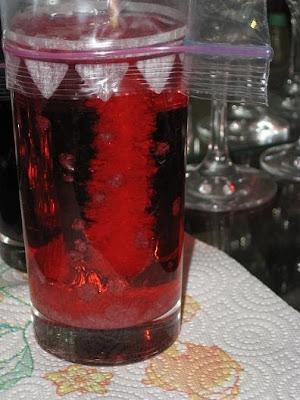 Lately I've been reading John Holt's book Teach Your Own. So far I would set it, along with Gatto's Dumbing us Down aside as the two seminal books critical of public education. It it also about unschooling, which we are only partially implementing here at home, but it is a very enlightening read. I especially enjoyed an early section called "common objections to homeschooling" which you can find reprinted here.
Lately I've been reading John Holt's book Teach Your Own. So far I would set it, along with Gatto's Dumbing us Down aside as the two seminal books critical of public education. It it also about unschooling, which we are only partially implementing here at home, but it is a very enlightening read. I especially enjoyed an early section called "common objections to homeschooling" which you can find reprinted here.One thing that also captured my attention the other day was Holt's description of what is required in order to teach something to anyone. One of the realizations we've come to over the past few years is that teaching is not nearly as difficult as we have been led to believe. In America, if you want to teach children in a school you are required to spend several years in a special school just learning "how" to teach. This strikes me as being very silly. From what I've learned through my own research and through talking with people who've gone through this specialized education (like my wife), it appears that teacher's schools teach primarily 3 things:
- A lot of overly complicated theories of very simple ideas
- How to manage large groups of children and keep them under control
- How to negotiate the huge amount of administrative red tape required of teachers in a public school
And, as Holt puts it, "These are clearly not things that one has to spend three years talking about"
- To help people learn something you must first understand what they already know;
- Showing people how to do something is better than telling them, and letting them do it themselves is best of all;
- You mustn't tell or show too much at once, since people digest new ideas slowly and must feel secure with new skills or knowledge before they are ready for more;
- You must give people as much time as they want and need to absorb what you have shown or told them;
- Instead of testing their understanding with questions you must let them show you how much or little they understand by the questions they ask you;
- You must not get impatient or angry when people don't understand;
- Scaring people only blocks learning
It strikes me that the career of "teacher" has been built into a kind of priesthood where only the specially trained can hope to accomplish anything and everyone else should fear to tread there. In my opinion teachers learn how to be teachers through the experience of teaching and not by sitting in a classroom learning pedagogical theories.
If I were hiring teachers for a private school I would require that applicants impress me with a sufficient knowledge of the subject matter they have specialized in as well as an understanding of principles similar to those 7 mentioned above. I would be less impressed by people who described spending years how to teach, but who hadn't spent the same or more time mastering the subject they wanted to teach.
I don't at all mean this as a dig against teachers. But, I don't see that a special study of education in and of itself is especially necessary to do their job. Instead I'd rather see professional requirements be limited to a proven understanding of the topic to be taught (math, chemistry, etc.) through an undergraduate degree (if not actual work experience) and an apprenticeship program. Maybe a class or two in "teaching theory", but surely not a multi-year program learning only how to teach something to other people.
To be fair, I consider the same to be true of my own profession of Social Work. Especially the great majority of work that I did during my last internship at the hospital. I can't see how that work would really require a 2 year advanced degree.







